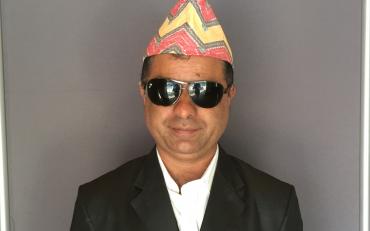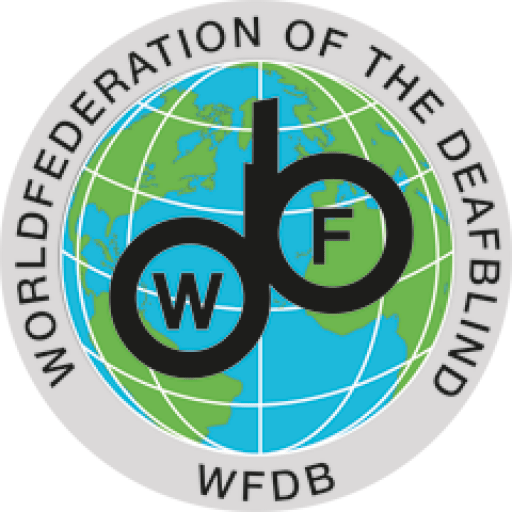 The recently elected board member of the World Federation of the Deafblind (WFDB), Puspa Raj Rimal, was interviewed during the WFDB General Assembly and the Helen Keller World Conference (HKWC), in Benidorm, 19-27 June 2018. The events were hosted and co-organised by FASOCIDE – Federación de Asociaciones de Personas Sordociegas de España (Spanish Federation of Associations of Deafblind People) and WFDB, with technical support from IDA. The events were made possible by financial support from Ministry of Foreign Affairs of Norway, UK AID, and Fundación ONCE.
The recently elected board member of the World Federation of the Deafblind (WFDB), Puspa Raj Rimal, was interviewed during the WFDB General Assembly and the Helen Keller World Conference (HKWC), in Benidorm, 19-27 June 2018. The events were hosted and co-organised by FASOCIDE – Federación de Asociaciones de Personas Sordociegas de España (Spanish Federation of Associations of Deafblind People) and WFDB, with technical support from IDA. The events were made possible by financial support from Ministry of Foreign Affairs of Norway, UK AID, and Fundación ONCE.
This is what Puspa Raj Rimal told to us:
“My name is Puspa Raj Rimal, I am the president of DAN – Deafblind Association Nepal. I have just been elected to be a WFDB board member for the next 4 years. I live in Pokhara, Nepal. According to the new constitutional structure, this is the fourth district of Nepal, my hometown is near to Kathmandu. I am a person with deafblindness and a teacher at the Amarsingh secondary school in Pokhara, where I am teaching to blind children.
Taking the example of Nepal, I can say that there is no education program specifically for deafblind children, and there are no measures to address the different levels of deafblindness.
If we take the example of people with deafblindness coming from a deaf community and who have acquired their blindness on top of the congenital deafness, you will find them in schools for deaf children. Those kids use sign language, but there are not enough adjustments for them.
In the same way, deafblind children coming from blind communities, will go to special schools for blind children. For them, it’s also very difficult: As they lose their hearing gradually, schools for blind children-only, do not have any adjustment for them.
Moreover, there are no trained professional teachers and mobility instructors for children who were born with deafblindess as a congenital disability.
So, how should an inclusive program for deafblind children look like?
To accommodate the needs of deafblind students, who are gradually losing vision, we should ensure that there is a good lightning management in the classrooms. The sitting management should not be far away from the white or blackboard so that they can hear or see better, actively participating in the class. The lightning should not be reflected on the whiteboard, not to be of disturb for their sight. The books should have large enough pictures, a large font size, as well as versions printed in braille. The uniform of the teacher should be visible, in order to ensure the good contrast. In the room, there should also be a very good and balanced sound system. Teachers should monitor the sitting arrangement, as well.
On top of all these factors, inclusive education for children with deafblindness means that they are given the same educational opportunities, just like every child. The students must be provided with appropriate assistive devices based on their requirements.
In order to provide children with deafblindness with quality education, the government should take the right measures to adapt the education curricula to children with deafblindness.
Yesterday, I was elected to be a board member of the WFDB, so now, both as the president of Deafblind Association Nepal and board member of the WFDB, I will try, together with my teams and with the other WFDB board members, to strengthen advocacy for quality education for the children with deafblindeness through awareness programmes.”
